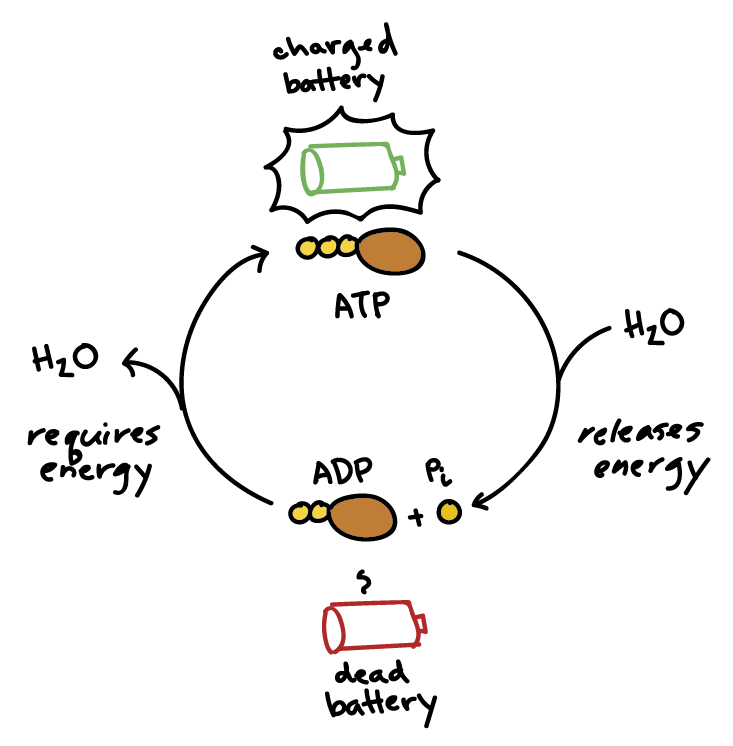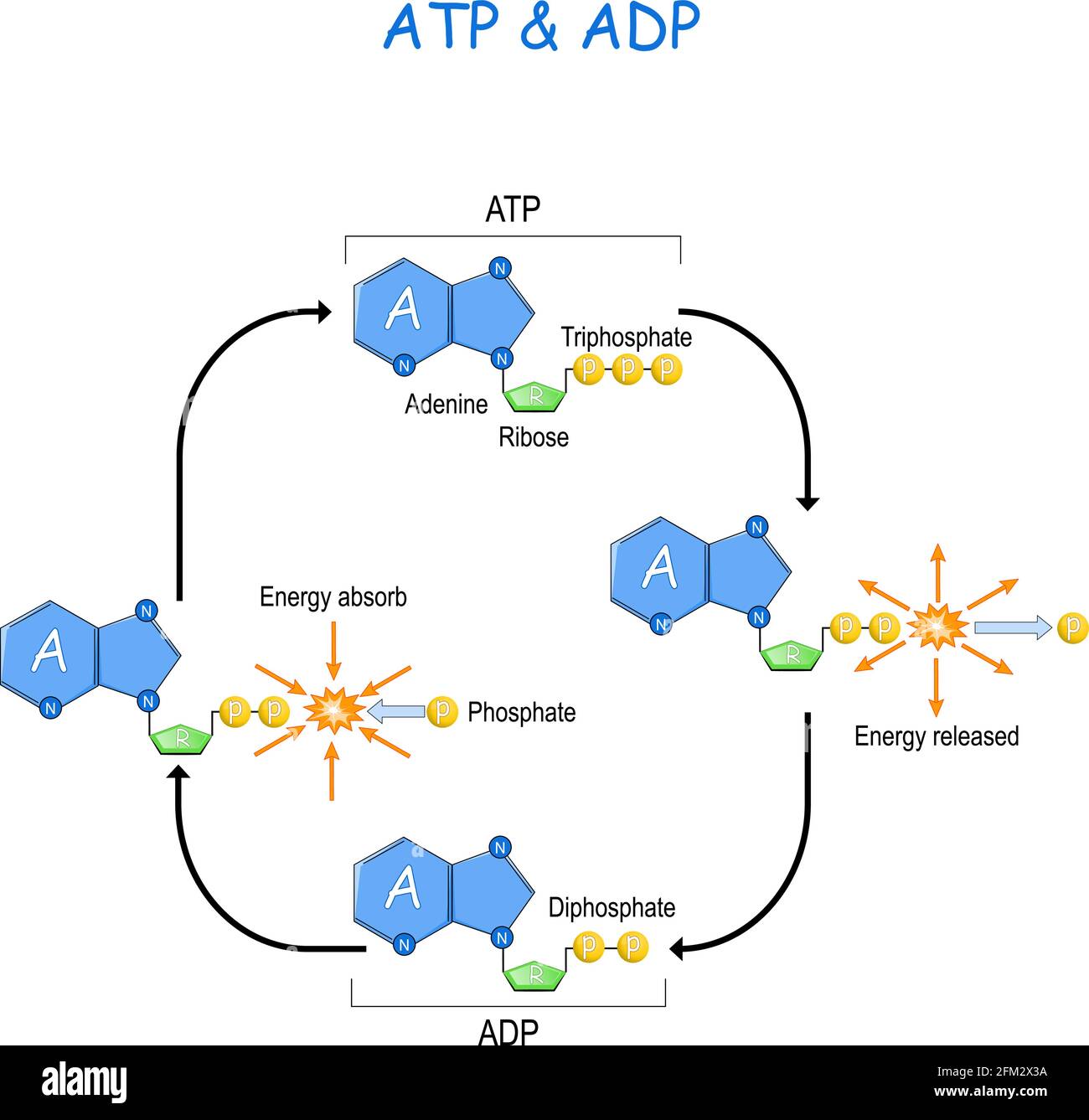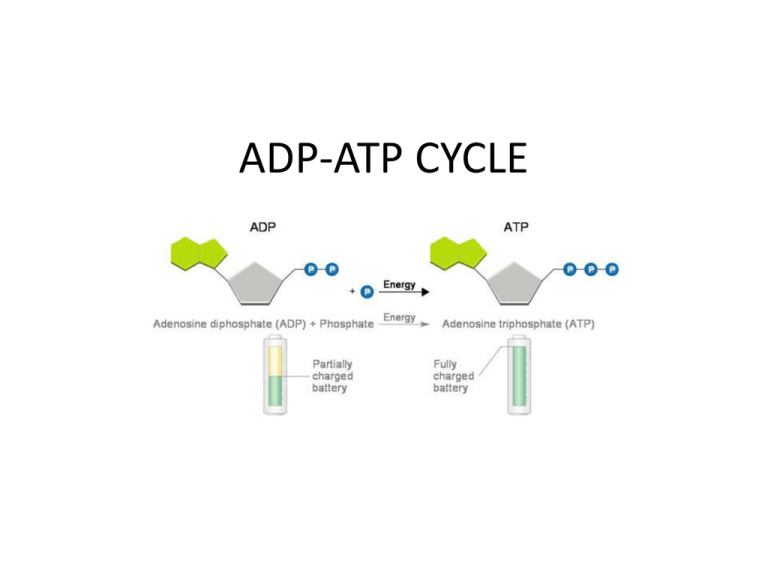What Happens When Atp Becomes Adp
Adenosine triphosphate ATP is converted to adenosine diphosphate ADP by hydrolysis of a single bond. Formation of GTP TTPATP CTG the.

Adenosine Triphosphate Definition And Examples Biology Online Dictionary
As the energy is released the three-stranded phosphate bond of ATP is broken into two strands.

. Think of it as the energy currency of the cell. ADP is combined with a phosphate to form ATP in tADPPifree energyATPH2O. When ATP breaks down into ADP it releases energy.
Adenosine monophosphate AMP can be produced by cleavage of a phosphate bond in ADP hydrolysis of ATP to form AMP and pyrophosphate or by transfer of one phosphate. The two-stranded phosphate group of ADP requires energy to bond it to an additional phosphate. Thus ATP is the higher energy form the recharged battery while ADP is the lower energy form the used battery.
It is therefore recruited back into a variety of biosynthetic pathyways fairly promptly. ADP also called adenosine diphosphate is a molecule formed in living cells. ADP is combined with a phosphate to form ATP in the reaction ADPPifree energyATPH2O.
According to Georgia State University this process generally occurs with water and is written as ATP H2O. ATP Adenosine tri-phosphate is an important molecule found in all living things. When the terminal third phosphate is cut loose ATP becomes ADP Adenosine diphosphate.
The energy released from the hydrolysis of ATP into ADP is used to perform cellular work usually by coupling the exergonic reaction of ATP hydrolysis with endergonic reactions. The energy holding that phosphate molecule is. Di two and the stored energy is.
If a cell needs to spend energy to accomplish a task the ATP molecule splits off one of its three phosphates becoming ADP Adenosine di-phosphate phosphate. The energy released from the hydrolysis of ATP into ADP is used to perform cellular work usually by coupling the exergonic reaction of ATP hydrolysis with endergonic reactions. It is often converted to adenosine triphosphate ATP a high-energy molecule used in various biochemical reactions.
What happens to the phosphate from ATP in cells. Usually this reaction is catalyzed by an enzyme that uses the. The cleaved phosphate group is known as pyrophosphate or inorganic phosphate and there is a pool of it within all cells which can be used for reactions.

Photosynthesis Atp And Adp Cycle

Atp Adp Cycle Intracellular Energy Transfer Energy Absorb And Energy Released In A Cell Adenosine Triphosphate Atp And Adenosine Diphosphate Adp Stock Vector Image Art Alamy

Comments
Post a Comment